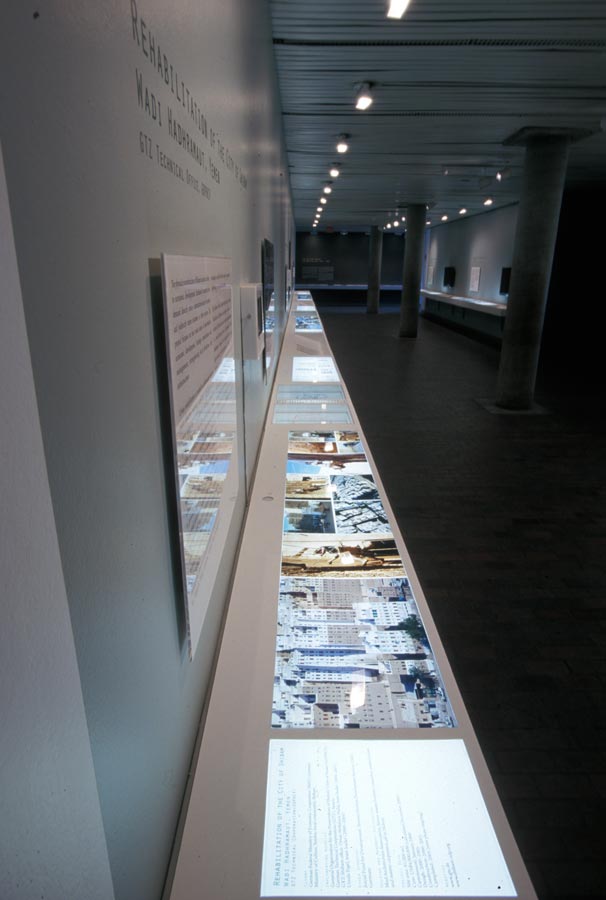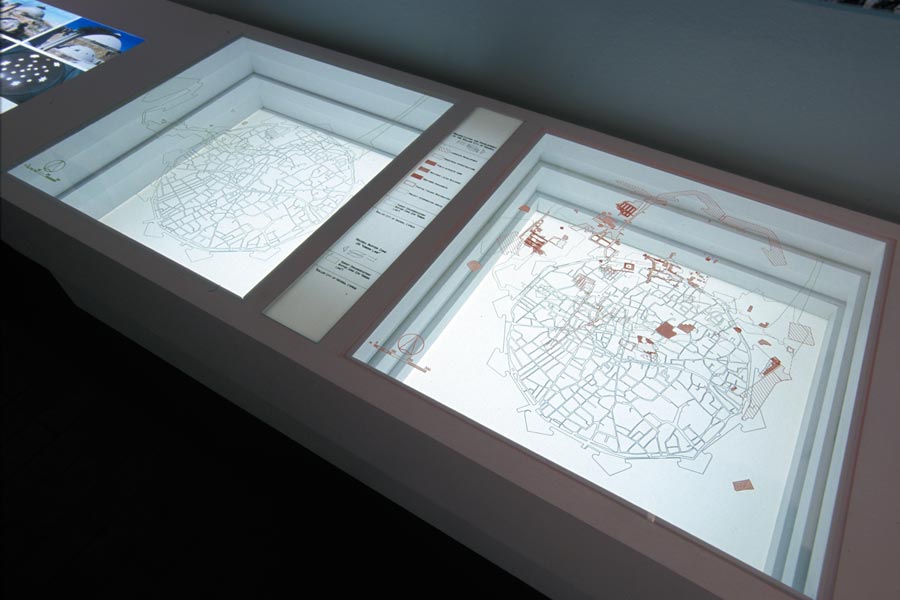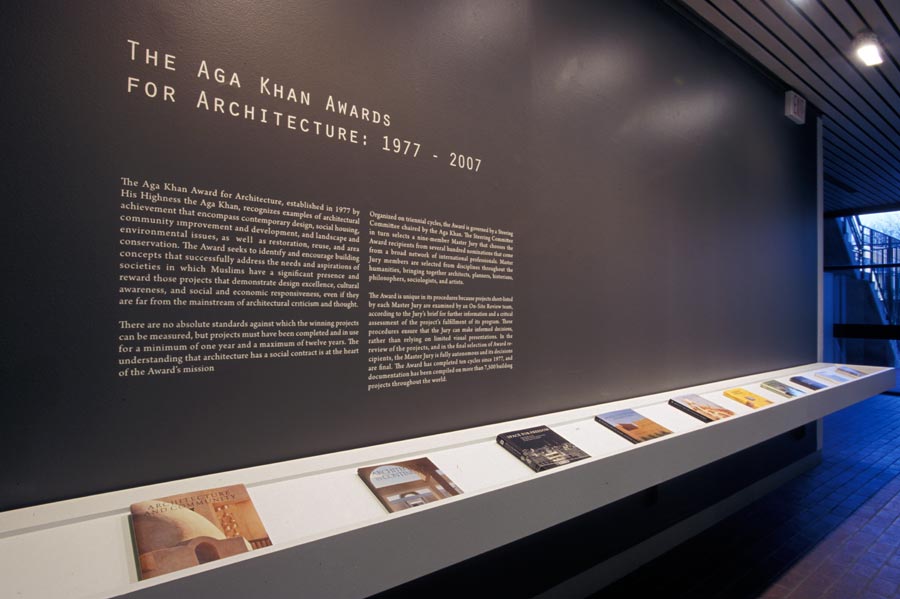The Aga Khan Award for Architecture: Tenth Cycle (2005-2007)
Tectonic Worlds
March 31, 2008–May 21, 2008
Hashim Sarkis, curator
Exhibition organized by the Aga Khan Program at the Harvard University Graduate School of Design and the Humanities Center at Harvard University, in collaboration with the Aga Khan Award for Architecture
Throughout its thirty-year history, over ten cycles, the Aga Khan Award for Architecture has identified and celebrated built projects in the Muslim world that demonstrate design's important role in social and economic development. Given the breadth of this pursuit and the geographic and cultural heterogeneity of the Muslim world, it has become customary in every cycle to expect a wide range of projects that share sensitivity to their contexts and an understanding of the developmental impact of design.
This cycle's nine awards do not fail the test of diversity. They range in location from Central Africa to Singapore, and in scale from an entire town to a small public square. Importantly, they all demonstrate that socioeconomic development is vitally linked to innovations in the process of construction. To build a durable and attractive educational facility in rural Bangladesh, two local construction technologies had to be combined. To restore a historic building in Yemen, an old plastering mix had to be reinvented by collective experimentation and revival of skilled labor in construction.
In this tenth cycle, a key attribute of the Aga Khan Award—that it is shared by designer and patron—seems to have been expanded to include builders and facilitators of construction. The exhibition focuses on this aspect of the Award by highlighting an element of each project where its constructability is most clearly confronted: key details such as the “monsoon window” in the Singapore apartment building; the section of the wood deck and the ficus tree roots in the public square in Beirut; and the infrastructure across the dividing line in Nicosia (and the construction coordination meetings that enabled the process of restoration across this divided city).
The exhibition highlights these tectonic instances as what Homi Bhabha has termed “moments of overlap”—overlap between the physical exigencies of design and the social and economic parameters of construction, between the rigidly divided stages of the design process (conceptual design, design development, and construction documents), and between these otherwise very different nine projects and the better worlds they project.
Hashim Sarkis
Aga Khan Professor of Landscape Architecture and Urbanism in Muslim Societies
Related Information
Aga Khan Program at the GSD
Gund Hall Gallery


